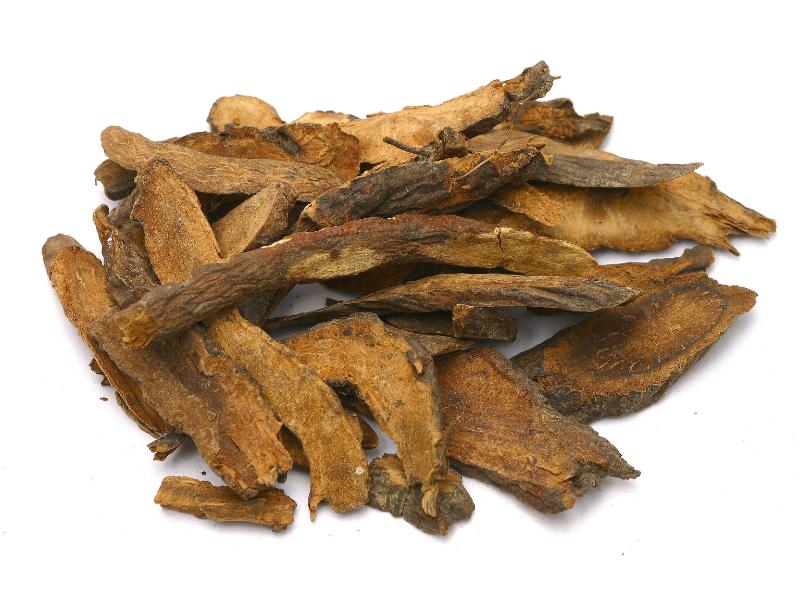Search in medicinals
Sanguisorbae Radix
Sanguisorba [root]
地榆 〔地榆〕 dì yú

Alternate English names: burnet [root]
Alternate Chinese names: 白地榆 bái dì yú; 鼠尾地榆 shǔ wěi dì yú; 涩地榆 sè dì yú; 紫地榆 zǐ dì yú; 酸赭 suān zhě
Kingdom: Plant
Origin in PRC Pharmacopoeia: Sanguisorba officinalis L.; Sanguisorba officinalis L. var. longifolia (Bert.) Yu et Li. (PRC Pharmacopoeia)
Origin in unofficial sources: Sanguisorba grandiflora (Maxim.) Mak.; Sanguisorba officinalis L. var. longifolia (Bert.) Yu et Li*; Sanguisorba longifolia Bertol.; Sanguisorba officinalis L.; Sanguisorba parviflora (Maxim.) Takeda; Sanguisorba tenuifolia Fisch. et Link
Use: Medicinal
Category: Blood-stanching agents / Blood-cooling blood-stanching agents
Properties: Bitter, sour; slightly cold.
Channel entry: Liver, stomach, and large intestine channels.
Actions and indications:
- Cools the blood and stanches bleeding: Used for all patterns of bleeding due to heat.
- Resolves toxin and closes sores: Burns and scalds, eczema,
sore s, and swollen welling-abscesses.
Dosage and method: Oral: 10–15g in decoctions; also used externally. Use char-fried to reduce its heat-clearing action and make it into an astringent blood-stanching medicinal.
Warnings: To be used with care in vacuity cold patterns with bloody stool, dysentery, or flooding, as well as in bleeding with blood stasis. It is unsuitable for
Product description: This is a cylindrical root of varying length and thickness. The exterior surface is brown with longitudinal wrinkles. Sometimes a rhizome is attached. It is hard and does not break easily. The decocting pieces are slices 2–4 mm thick, which are dark brown with irregular yellow or white markings on the cut edge.
Quality: The best roots are dry, thick, and solid with a blackish skin, and without rhizome or fine roots.
Production area: Héběi, Jiāngsū, ānhuī, Zhèjiāng, Hénán, Húnán, Guìzhōu, and Korea.
Etymology: The name dì yú 地榆, ground elm,
is allegedly so called because its leaves are similar to those of the elm (yú 榆), and roots of the young plant spread over the ground (dì 地).